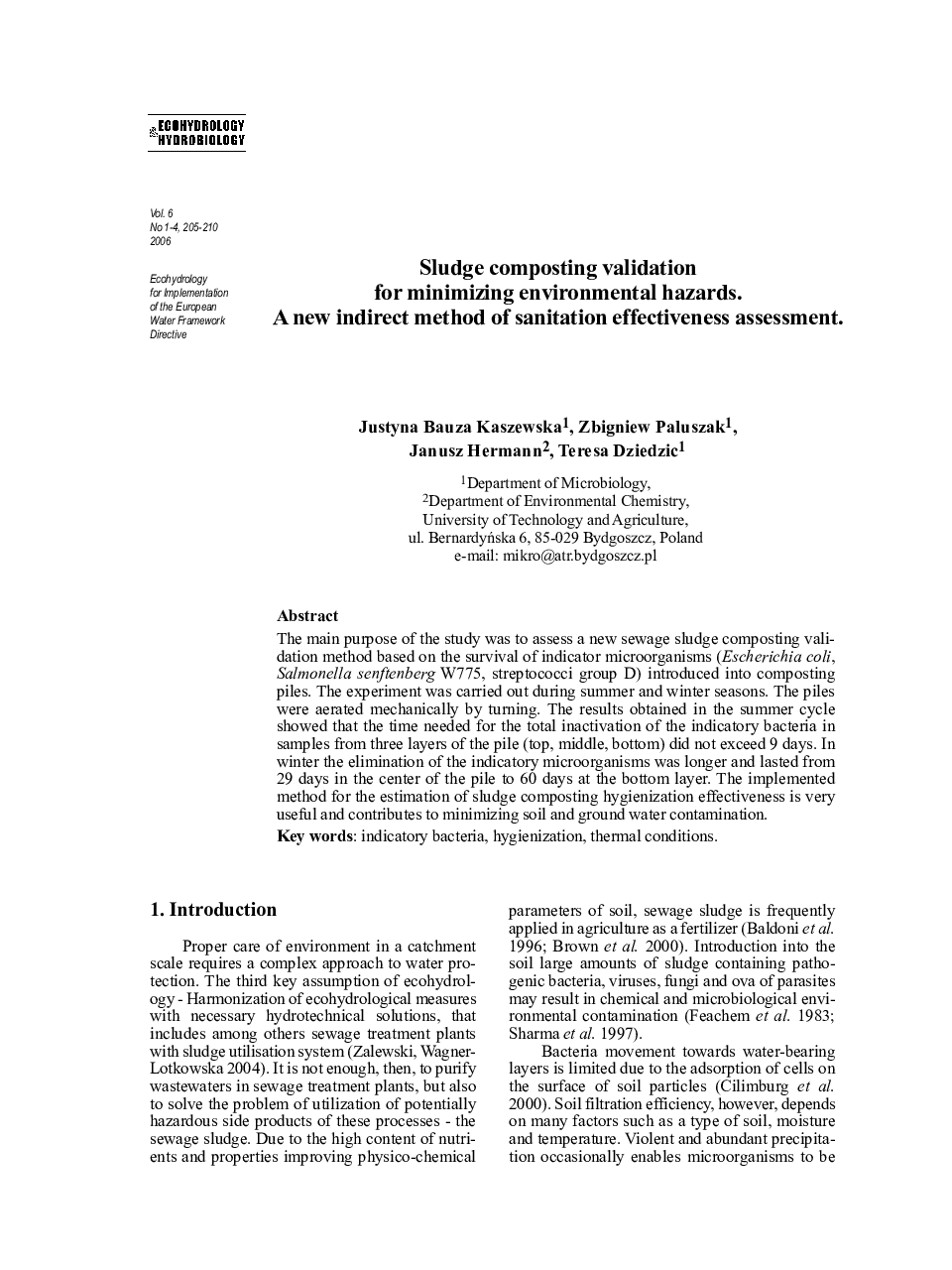| Article ID | Journal | Published Year | Pages | File Type |
|---|---|---|---|---|
| 4388351 | Ecohydrology & Hydrobiology | 2006 | 6 Pages |
The main purpose of the study was to assess a new sewage sludge composting validation method based on the survival of indicator microorganisms (Escherichia coli, Salmonella senftenberg W775, streptococci group D) introduced into composting piles. The experiment was carried out during summer and winter seasons. The piles were aerated mechanically by turning. The results obtained in the summer cycle showed that the time needed for the total inactivation of the indicatory bacteria in samples from three layers of the pile (top, middle, bottom) did not exceed 9 days. In winter the elimination of the indicatory microorganisms was longer and lasted from 29 days in the center of the pile to 60 days at the bottom layer. The implemented method for the estimation of sludge composting hygienization effectiveness is very useful and contributes to minimizing soil and ground water contamination.
